Abstract
The relatively recent development of more-effective pulicides has been paralleled by the discovery of more-efficient rodenticides. Eight of the latter—namely, warfarin, pival, red squill, α-naphthylthiourea (ANTU), zinc phosphide, arsenic trioxide, thallium sulfate, and sodium fluoroacetate (1080)—are discussed with particular reference to the criteria of effectiveness against rodents and relative safety to humans and pets. Although the perfect rodenticide has not yet been found, the authors consider that, at present, warfarin appears the most successful in domestic-rat control campaigns. However, the true value of warfarin has still to be determined, and in the meantime it is necessary to select the rodenticide and bait which appear to be most appropriate in each case. In addition, the authors point out that, if the initial poisoning has been ineffective, follow-up with a second rodenticide and bait can produce good results.
Full text
PDF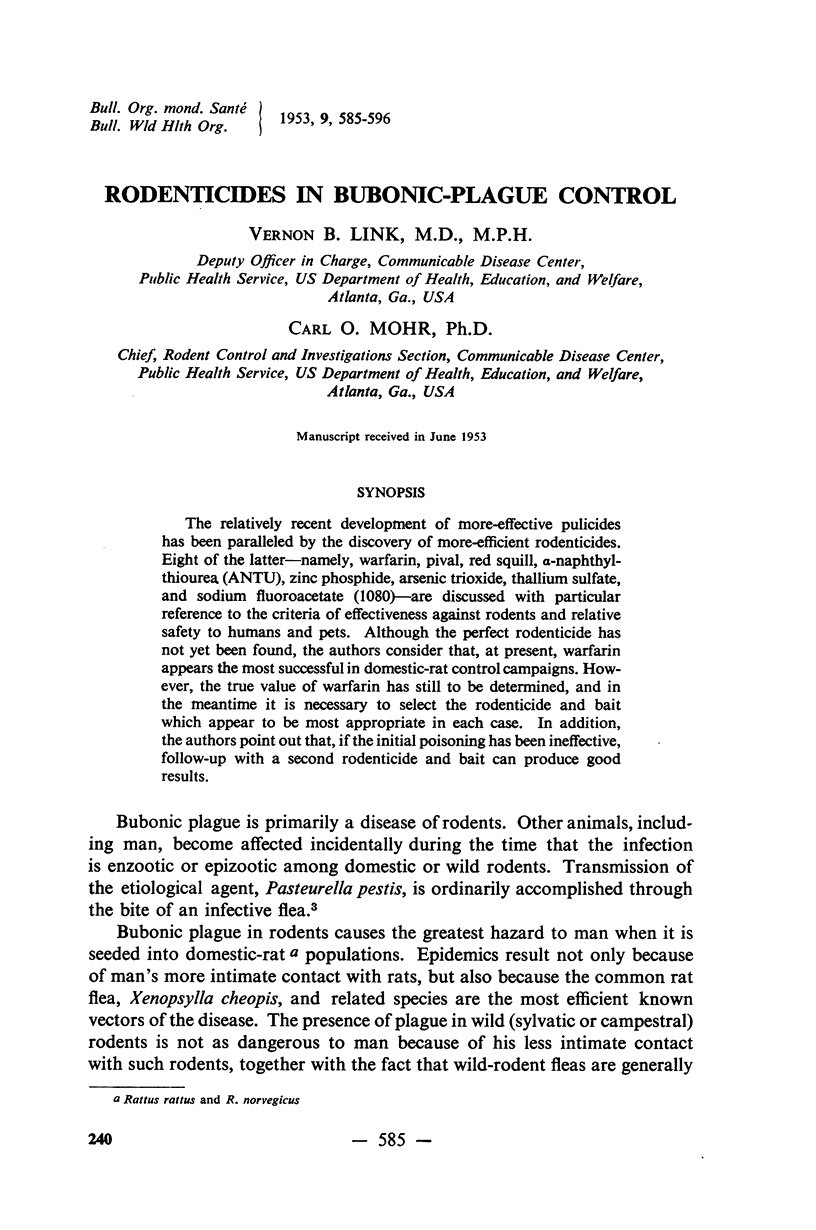
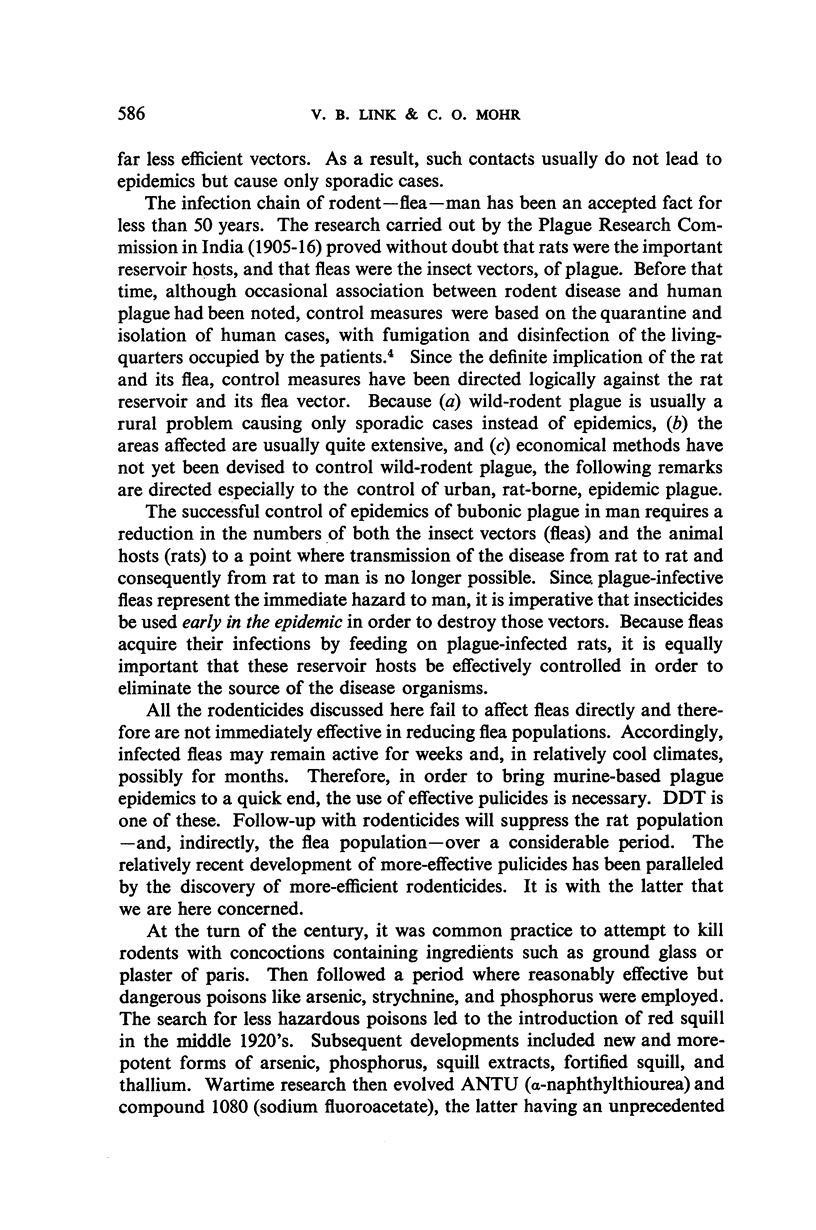
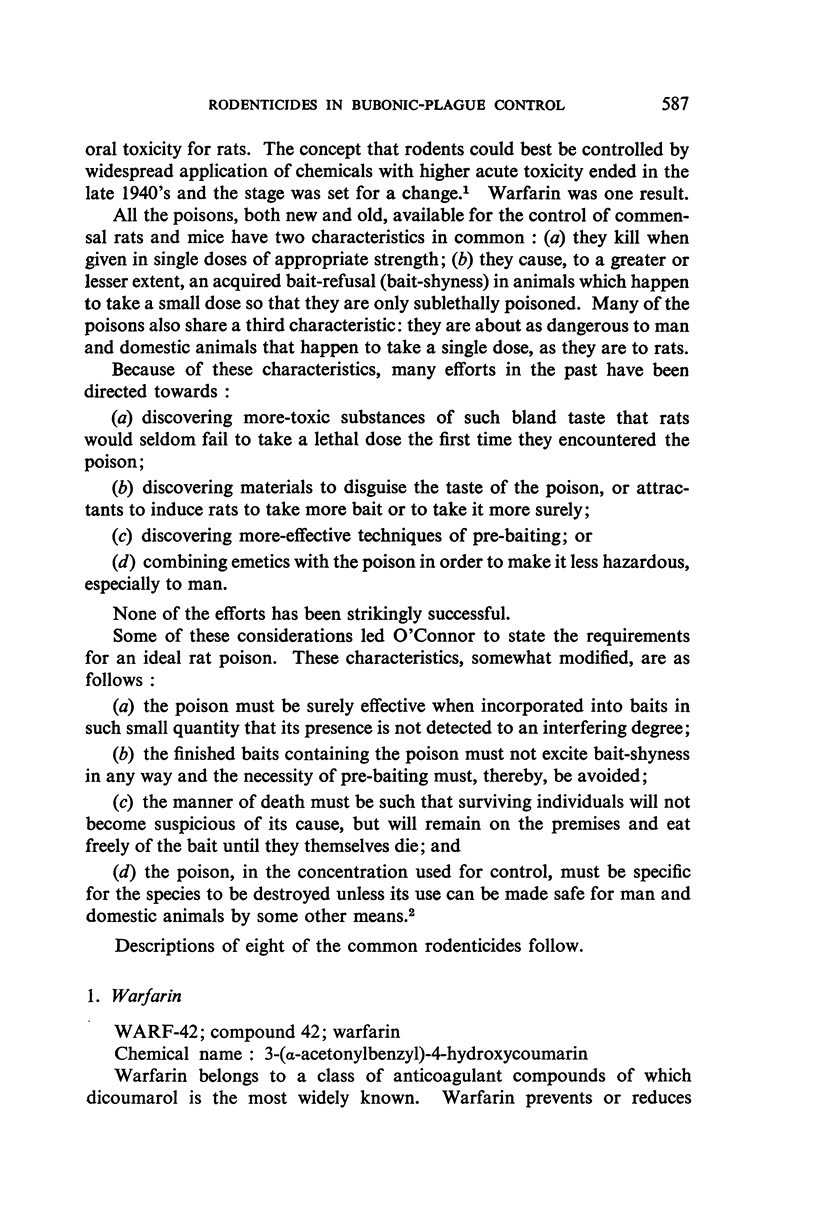
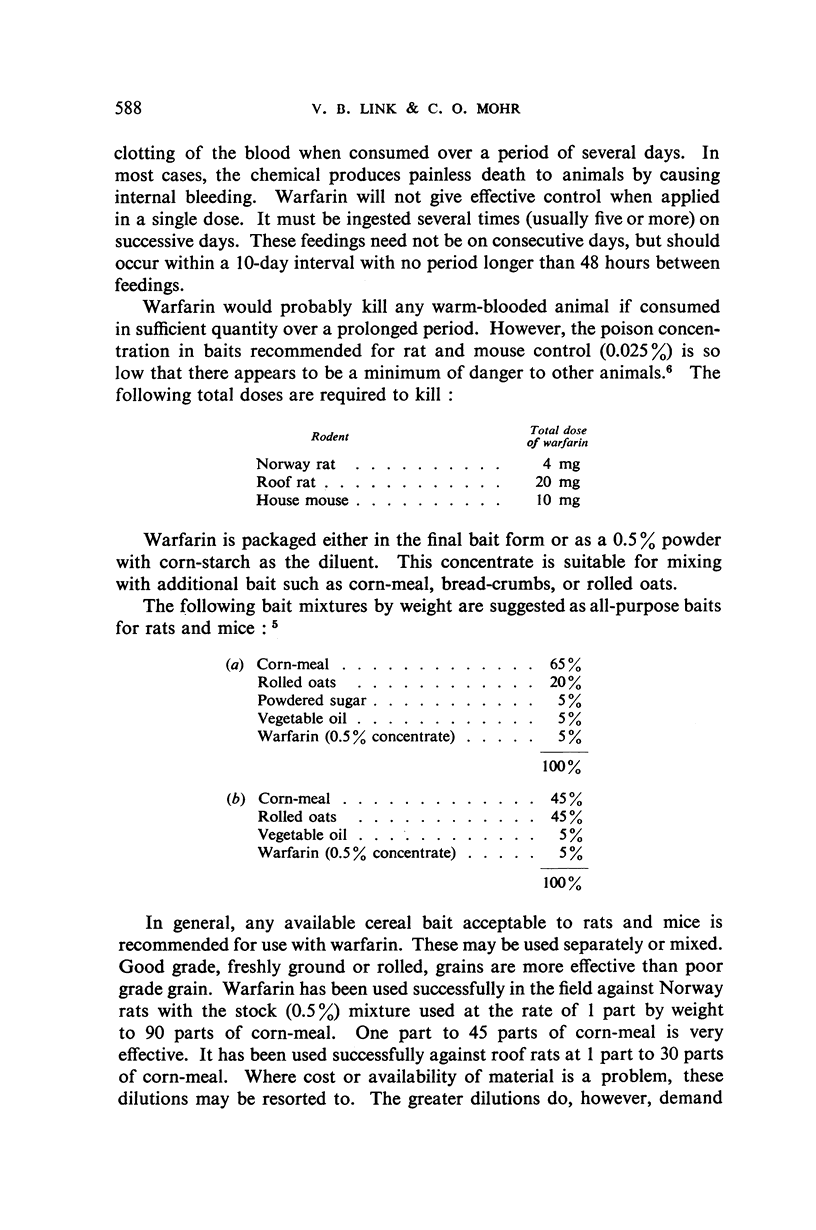
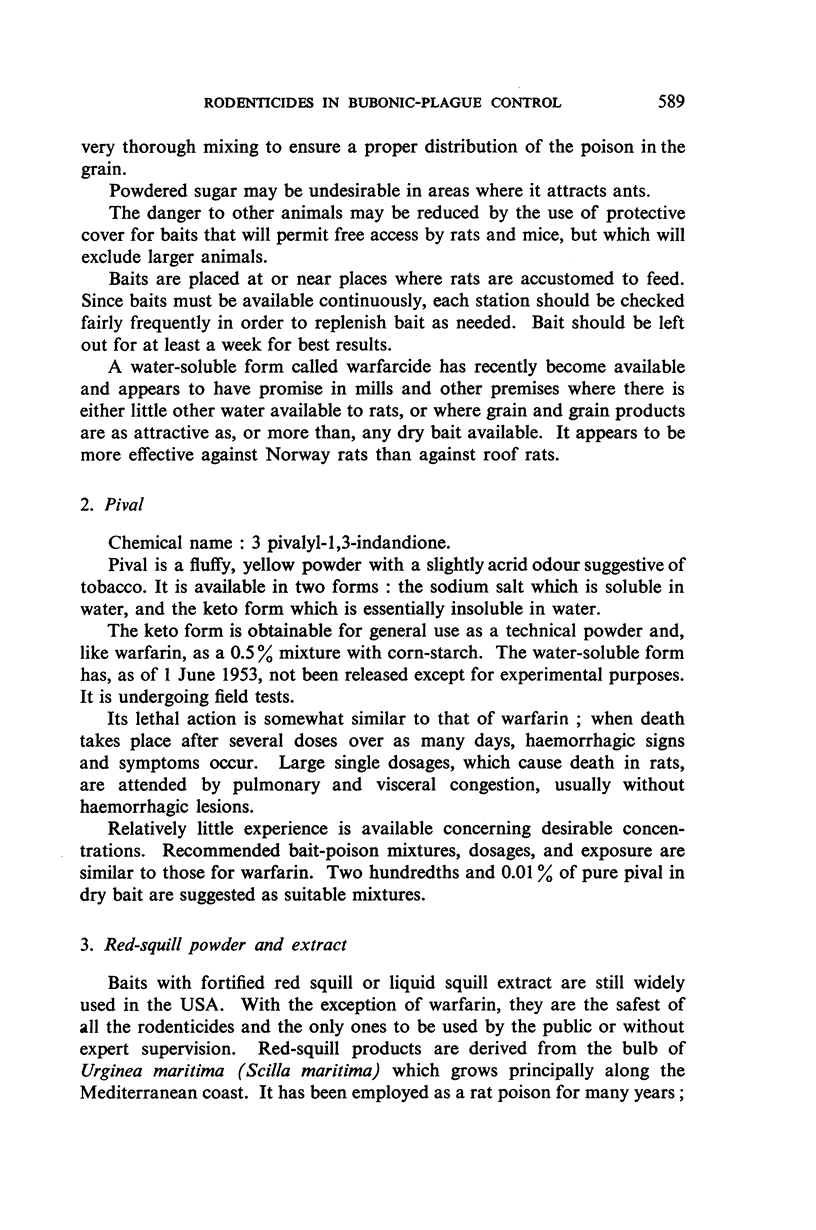
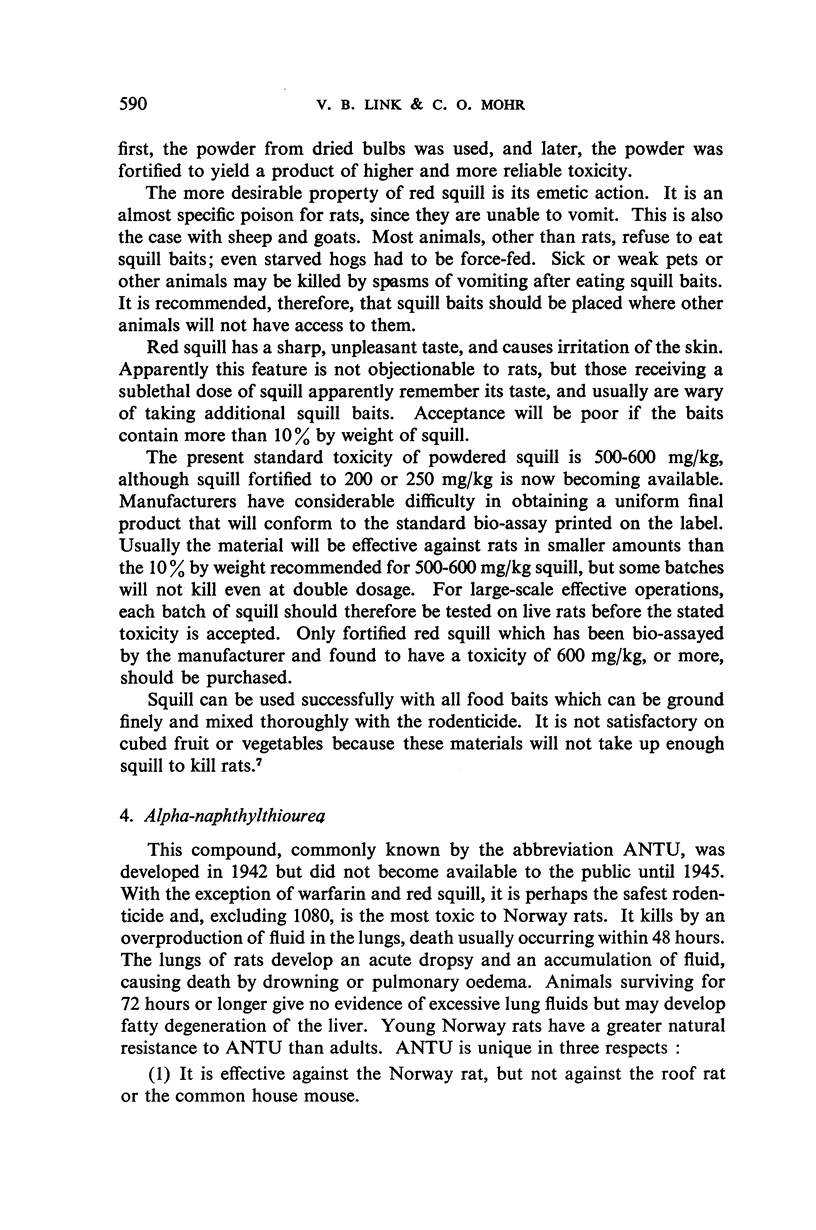
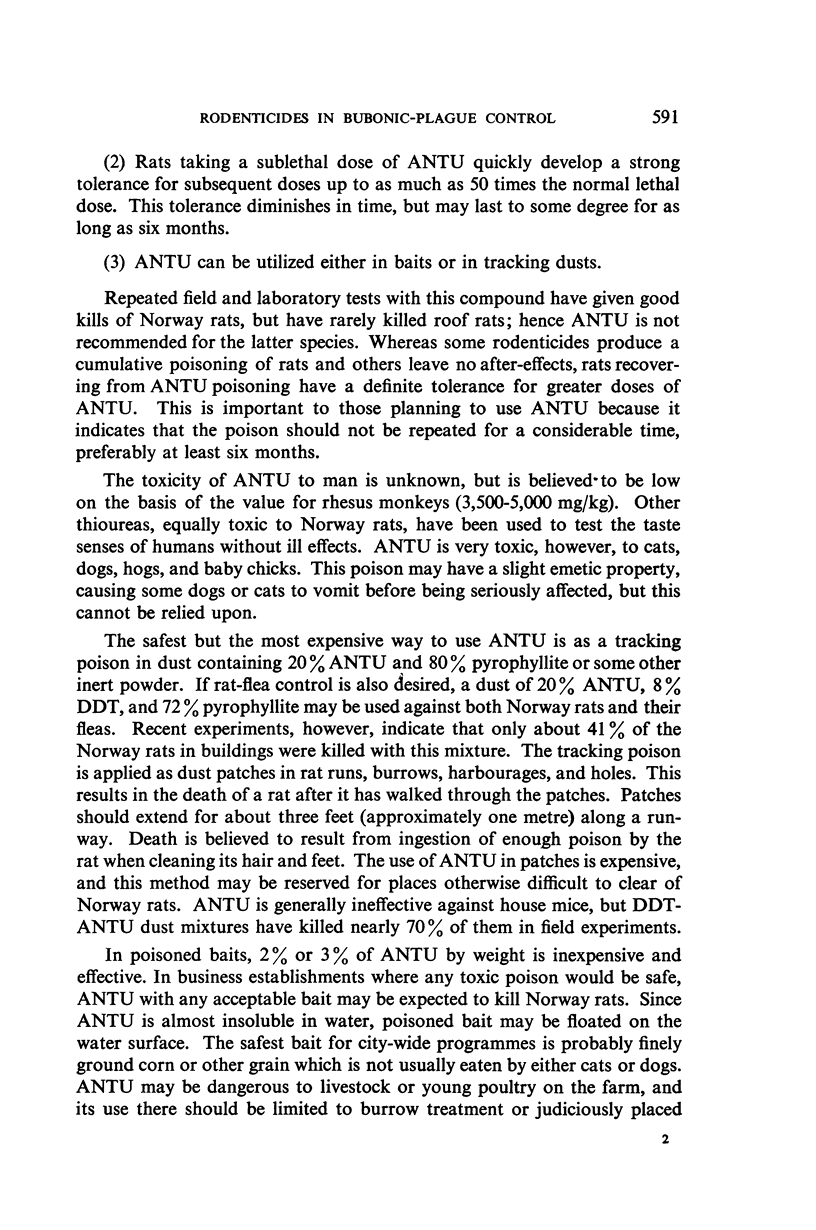
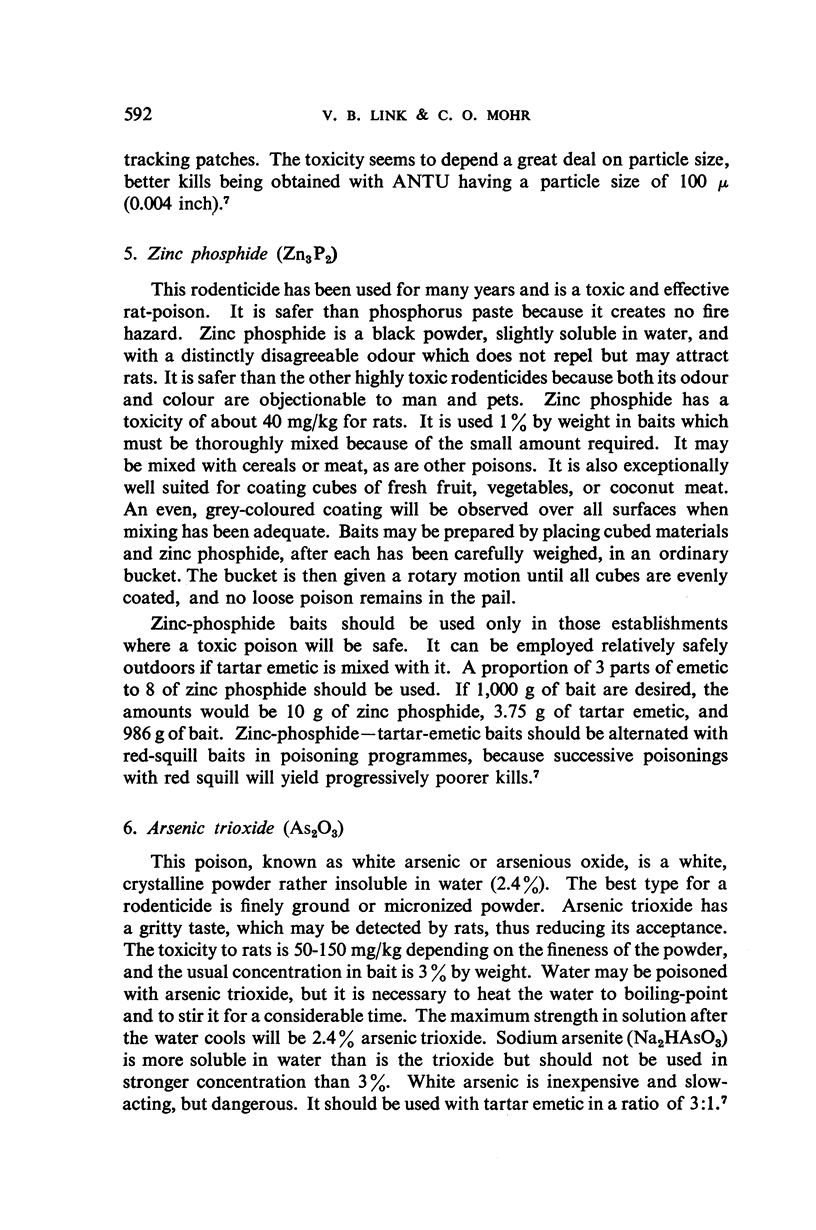
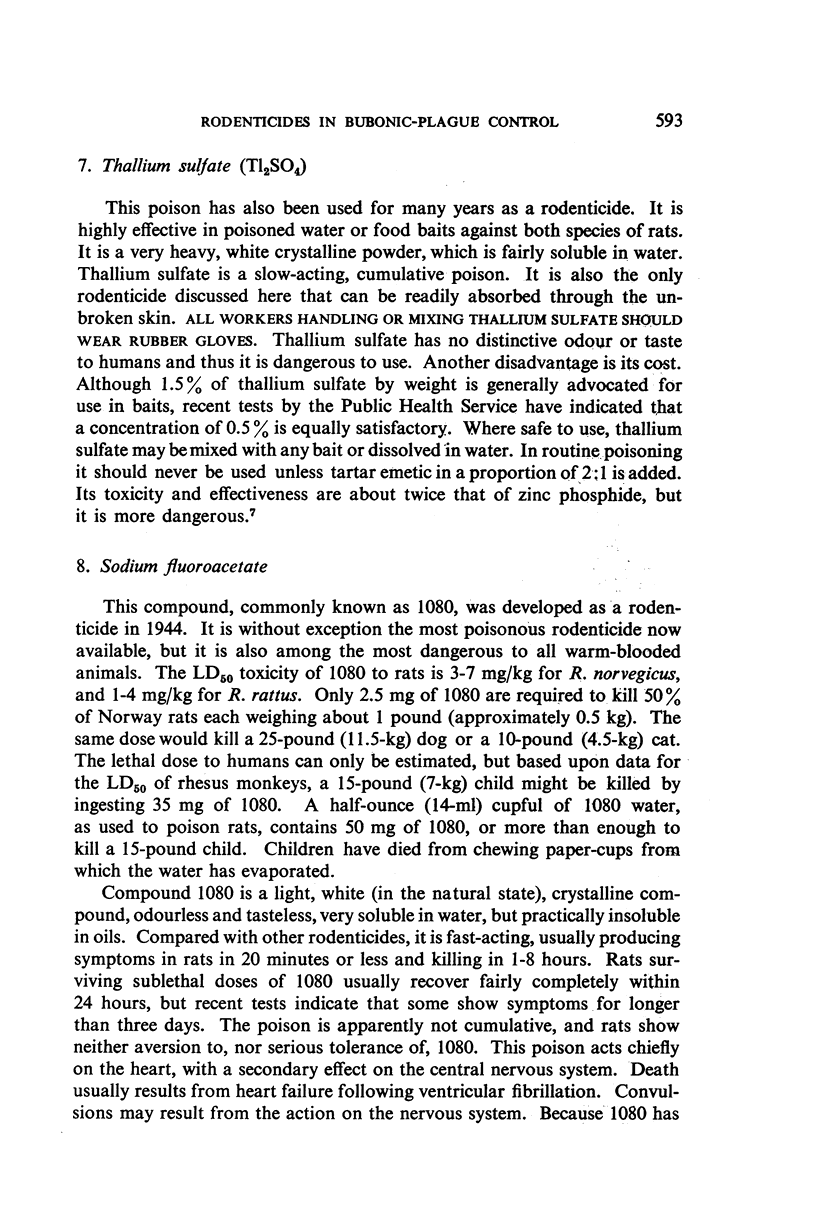
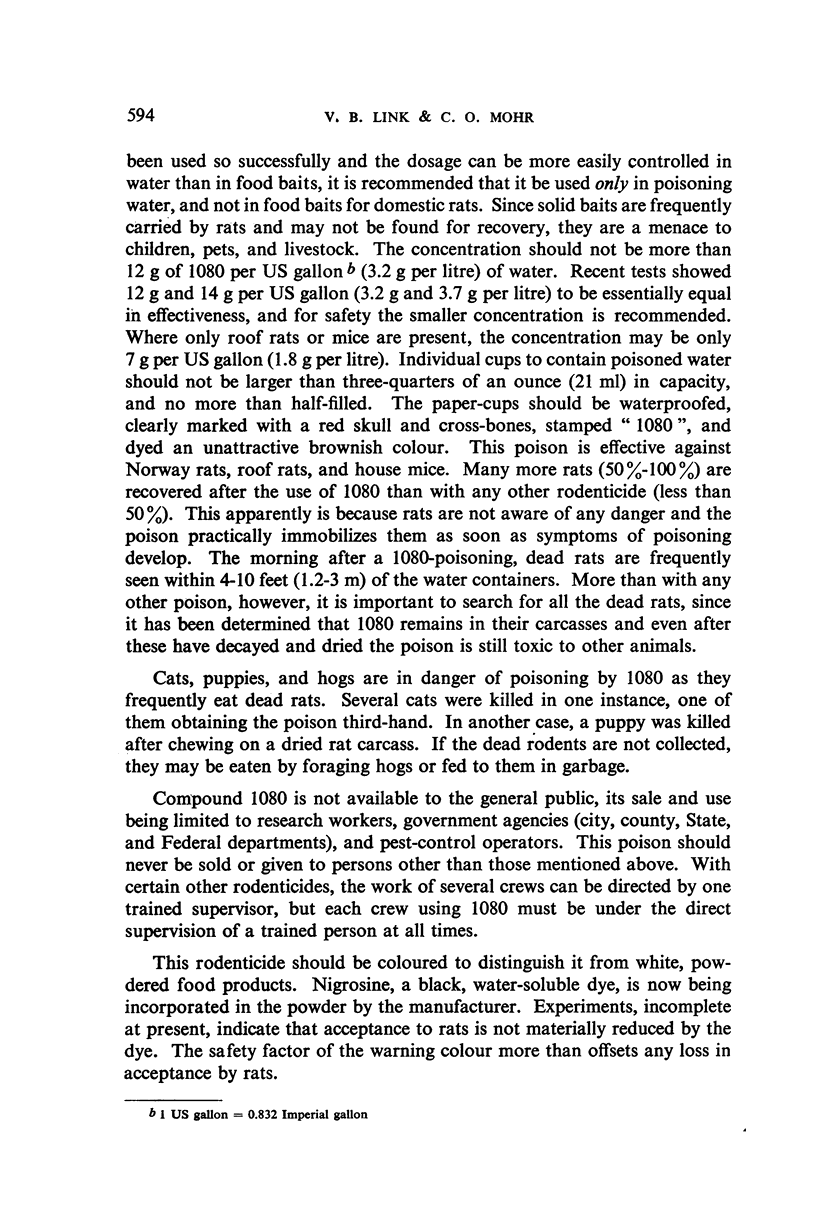
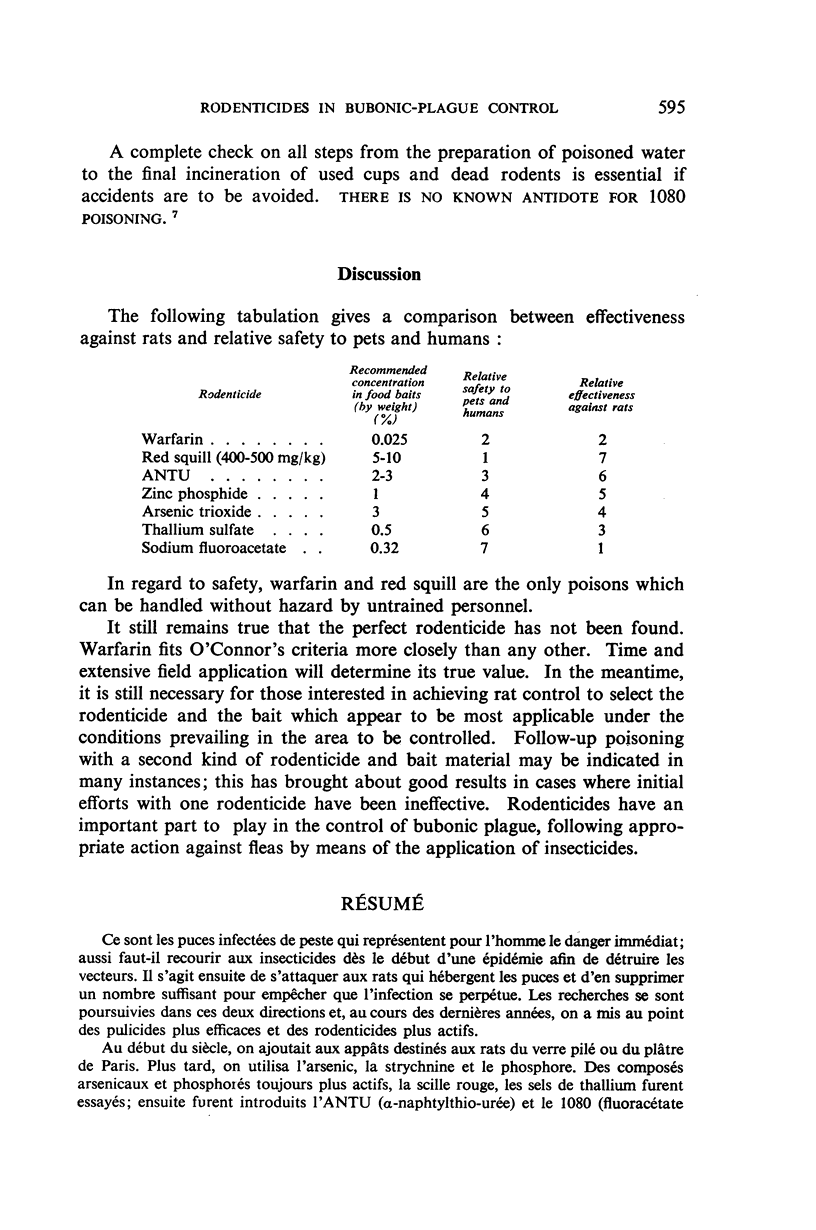
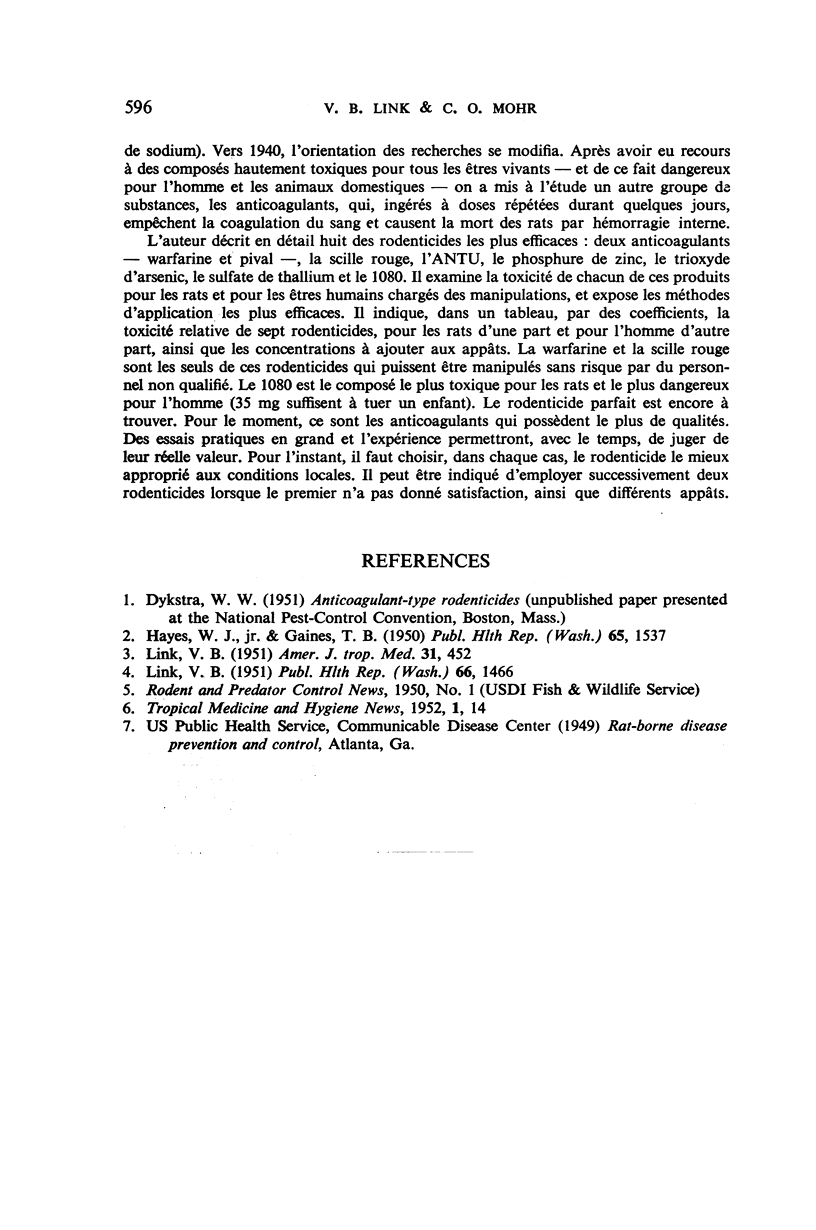
Selected References
These references are in PubMed. This may not be the complete list of references from this article.
- HAYES W. J., Jr Control of Norway rats with residual rodenticide warfarin. Public Health Rep. 1950 Nov 24;65(47):1537–1555. [PMC free article] [PubMed] [Google Scholar]
- LINK V. B. Plague on the high seas. Public Health Rep. 1951 Nov 9;66(45):1466–1472. [PubMed] [Google Scholar]


